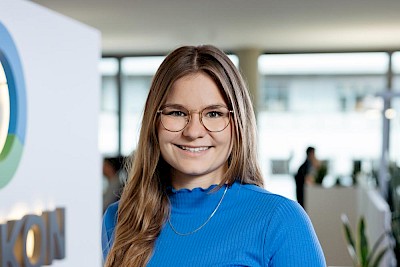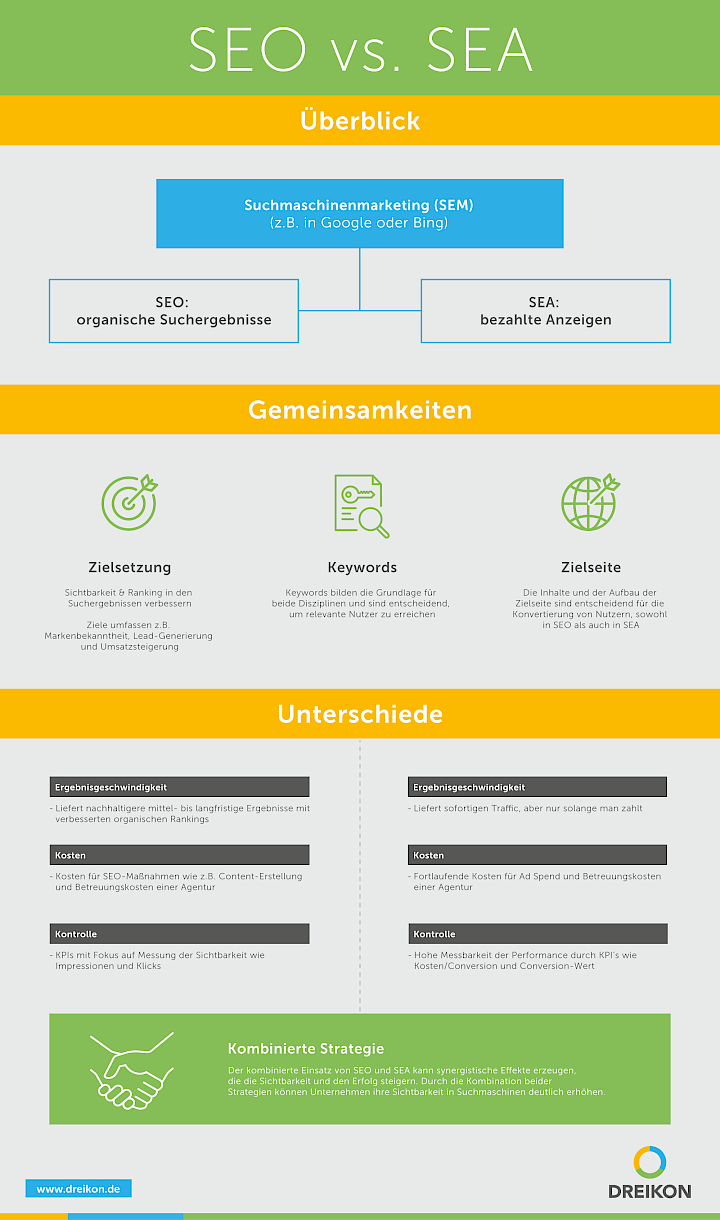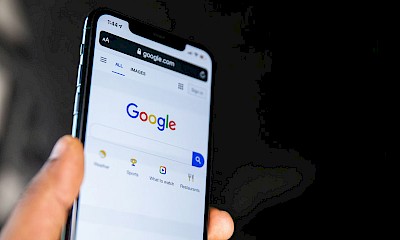
SEO vs. SEA: Which should companies choose for their marketing strategy?
SEO and SEA are essential measures in the online marketing mix in order to be found in search engines and to present your own products or services to the right target group. But where should companies invest their marketing budget? We give you an overview of the most important basics, compare SEO and SEA and provide you with an answer to the question of how website operators should choose their search engine marketing strategy.
What is search engine marketing?
Search engine marketing (SEM) is an extremely important part of the marketing strategy for most companies. With search engine marketing, advertisers can increase their visibility in search engines (e.g. Google, Bing) and the number of visitors to their website, reach potential customers in a targeted manner and continuously monitor and optimize their measures.
Search engine marketing is the generic term for search engine optimization (SEO) and search engine advertising (SEA). The aim of both SEO and SEA is to achieve a higher ranking in the search results. While search engine optimization targets organic search results, SEA involves the placement of separate paid ads.
How are search results pages structured?
The search results pages, also known as SERPs (Search Engine Result Pages), are divided into organic and paid results. The paid ads appear above the organic search results and at the bottom. There are also other ad formats such as shopping ads, which are also displayed in the shopping results, or video ads, which can be displayed on platforms such as YouTube.

Search engine optimization
Search engine optimization (SEO) includes all measures to place a target page as high up as possible in the organic search results based on its focus keyword and in line with the query of the person searching. In search engine optimization, there are many different ranking factors that can influence the organic rankings of a website. These include the relevance of content, keyword placement and density, the quality of metadata, loading speed, backlink profile and other factors that can be optimized with targeted SEO measures.
Search engine advertising
In search engine advertising (SEA), advertisers place paid ads, usually via Google Ads, with targeting based on keywords or a shopping feed and many other options such as target group and location targeting. An auction of advertisers bidding on the respective keyword is started for each search query. Billing takes place each time a searcher clicks on an ad. The click prices vary per keyword and per auction. However, it is not only the website operator's budget that is included in the bid. The quality factor assigned by Google Ads for the ads is also decisive. This is made up of factors such as the relevance of the ad, the user experience on the landing page and the expected click-through rate. Ads with a higher quality factor compared to their competitors have a positive influence on the ranking factor of the ad and therefore the findability of the advertised landing page.

SEA vs. SEO - similarities
Before we go into the main differences, there are some important similarities between the two disciplines. Search engine advertising and search engine optimization share the same objective and basis of keywords and target page.
Objective
Search engine optimization and search engine advertising both aim to improve the visibility and ranking of a website in search results in order to drive more traffic to the website. Depending on the search intention or campaign type, different overall objectives can apply in both search engine optimization and search engine advertising.
Search engine marketing can be used for branding purposes to draw attention to a brand, certain products or services, for example by making your own brand visible in an ad position at the top of the search results page for a suitable search term.
High placement in the search results for a relevant search query increases the likelihood that potential customers will find your website and sign up for a newsletter or otherwise provide their contact details.
Online and offline sales can also be increased through a high ranking for a specific search term (e.g. buy sneakers) or shopping ads.
Keywords
In both search engine advertising and search engine optimization, keywords form the essential basis for being findable for relevant search terms and being able to offer suitable searchers the optimal user experience. In search engine advertising, this only does not apply to certain campaign types such as shopping or video, which are based on a shopping feed or on the basis of target group targeting.
Target page
In search engine marketing, the content and structure of the landing page is one of the decisive factors for user conversion. Paid search engine advertising can be placed for a user-unfriendly landing page and visitor numbers can be increased in the short term. However, if users leave the landing page immediately, this has a negative impact on the quality factor of the ads and, of course, no leads or sales are generated. In search engine optimization, ranking factors such as content quality and relevance and page loading speed are even more important, as the organic ranking cannot be influenced by bids.

Would you like to increase your online sales or generate more inquiries with search engine marketing?
With our many years of experience, we will be happy to show you how you can utilize your individual potential under the umbrella term of search engine marketing and get more clicks on your website. Feel free to contact us for a non-binding initial consultation - we look forward to hearing from you!
SEA vs. SEO - differences
Although search engine optimization and search engine advertising fall under the umbrella term of search engine marketing and share the same fundamental objectives and basis, the approach is very different and requires expert knowledge in each area. Apart from the sometimes different ranking factors, the main differences between the areas of search engine marketing lie in the speed of results, the short-term or long-term nature, the costs and the degree of control.

Result speed
One of the main differences between the areas of search engine marketing is the speed of results. Search engine advertising always delivers immediate traffic results. If the budget is increased, this analogously leads to increased traffic. The difficulty lies in achieving high ad placements with constant optimization and targeting the right users who convert in order to achieve the highest possible return on investment (ROI).
SEO measures, on the other hand, tend to bring medium to long-term results. It takes some time for search engine optimization to lead to a highly ranked website in the search results pages. After changes have been made to a website, search engines such as Google must first crawl and index these changes. This process can take some time, especially for newer or less well-known websites. In highly competitive industries or for keywords that are in high demand, it can also take longer and require re-optimization before your website ranks better than the competition.Short-term vs. long-term
SEA measures can achieve results in the short term, as key figures such as the click-through rate and conversion rate are immediately available when a paid campaign is launched. However, SEA measures only have an effect as long as the ads are paid for and the campaigns are continuously optimized. Search engine optimization, on the other hand, is a more sustainable method which, with suitable measures and subsequent optimizations, can ensure a high ranking in the longer term even without permanent costs.
Costs
SEA campaigns must be optimized on an ongoing basis. This may incur costs for an agency in addition to the budget for the campaigns if you do not have an in-house expert. The same applies to SEO measures, which are basically unpaid advertising but should also be carried out and monitored by SEO experts. Search engine optimization is a long-term investment with higher initial costs for measures such as the creation of high-quality, search engine-optimized content. Through re-optimization, identifying further potential and reacting to market changes, SEO can achieve a sustainable effect and become more cost-effective in the long term. Of course, both SEO and SEA aim to have a cost-effective impact in relation to the ROI.

Monitoring
In search engine marketing, there are various analysis tools that can be used to monitor the key figures for the measures implemented. This data provides the decisive basis for determining potential, prioritizing measures and, in the case of search engine advertising, even the data basis for the algorithms of the bidding strategies in Google Ads.
The measures via Google Ads can be planned more precisely than in SEO thanks to directly evaluable key figures such as the costs per generated query and the scope of the selected budget. The quality factor of the ads can also be viewed in the Google Ads account and optimized by adjusting ad titles, for example. Controlling in SEO, on the other hand, is more complex, as evaluation periods are longer and successes cannot always be directly assigned to individual measures. The focus here is on KPIs relating to visibility such as impressions and clicks.
Addressing target groups effectively
Paid search engine advertising offers more targeting options in terms of which target groups are addressed than search engine optimization. For example, Google Ads uses target group signals, groups users with common interests or can use data collected by the advertiser for remarketing purposes.
Combined search engine marketing strategy
How should website operators now align their search engine marketing? The SEO and SEA disciplines in search engine marketing can be approached individually. However, there are some synergy effects that make a combined search engine marketing strategy particularly strong.
Increasing visibility
The more space your brand occupies in the search results, the better. If SEO and SEA potentials are used together, a brand can be displayed at the top of the first search results page with an ad space and an organic ranking at the same time. This can not only double visibility and improve conversion rates, but also increase trust and drive out competition.
Data synergies
Another major advantage of a combined search engine marketing strategy is the various data sources that can be used for evaluation. The successes from SEA provide valuable data as they reflect the specific search needs of users. Among other things, this data shows exactly what users have searched for and which ad texts have generated a particularly high click-through rate. For example, successful SEA keywords with a high conversion rate can be reused for search engine optimization.

Sustainable results
With SEA, fast results can be achieved cost-effectively with expenditure that can be adjusted at any time and continuous optimization. Campaigns can even be successful within the first few weeks. However, apart from the contribution to brand awareness, no lasting effect is achieved. After the campaigns are discontinued, the ads disappear directly from the top of the first search results page.
This loss would be compensated for by search engine optimization. If SEA campaigns are switched off, users could continue to demand products or services thanks to good organic rankings. Conversely, unforeseen organic ranking losses can occur for high-revenue keywords due to adjustments in the Google algorithm, for example. In such cases, targeted ad placement compensates for the losses.

You want to rank in the top ad positions?
Used correctly, SEA can significantly support the successes achieved through SEO and at the same time increase traffic in the short term while the SEO measures take effect. Therefore, a combined search engine marketing strategy is particularly aimed at sustainability and dominance over competitors.
We will be happy to help you identify and implement an individual combination of measures that makes sense for you. Feel free to contact us without obligation!
Conclusion - SEO vs. SEA
In summary, the synergetic effects of search engine advertising and search engine optimization in particular make website operators competitive players in search engine marketing. Although the initial time and financial outlay may seem high, a combined search engine marketing strategy is ideal for the future. Do you want to stay ahead of your competitors and appear in the top advertising positions? As a specialized agency, we are happy to support you!











